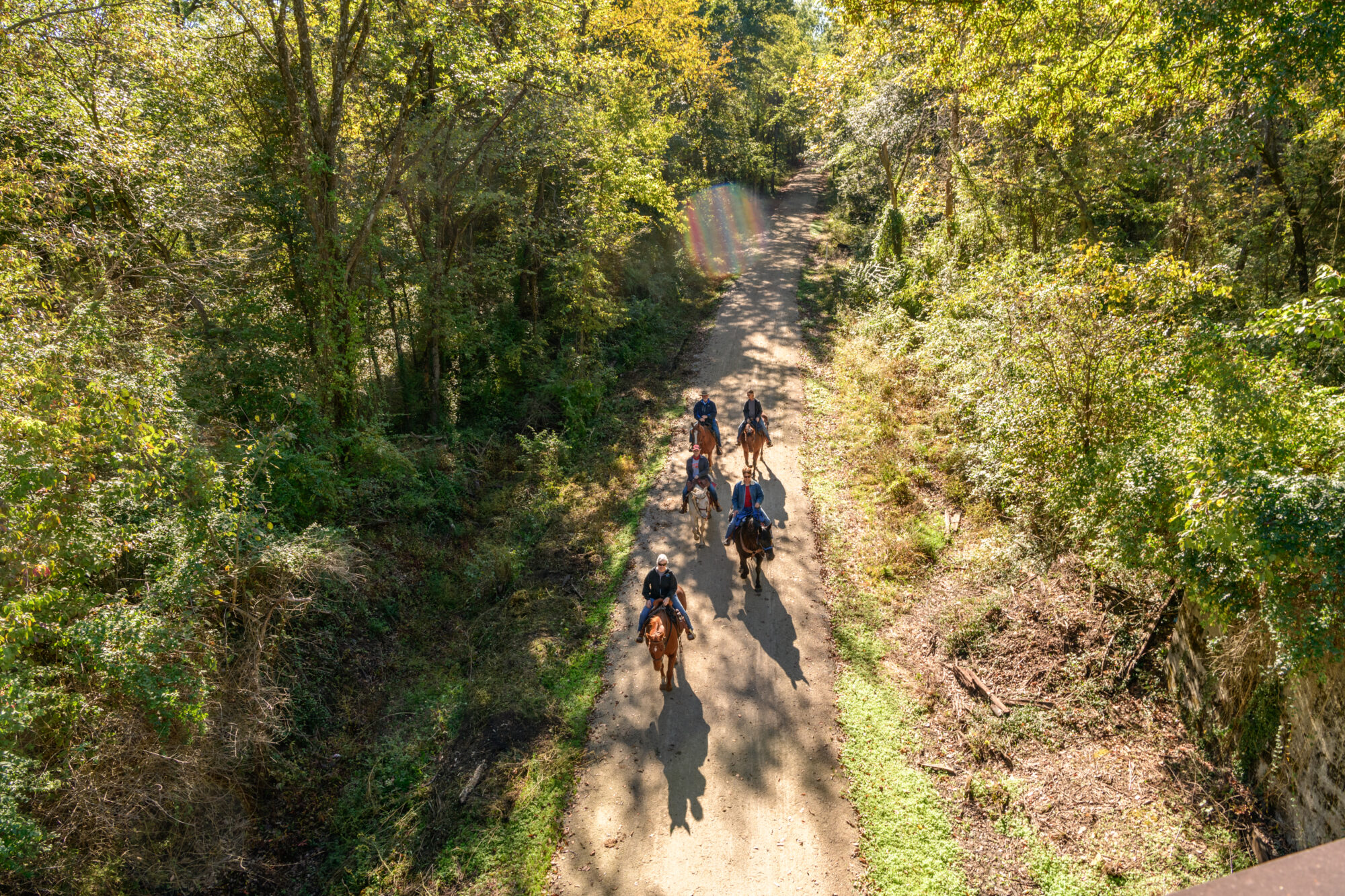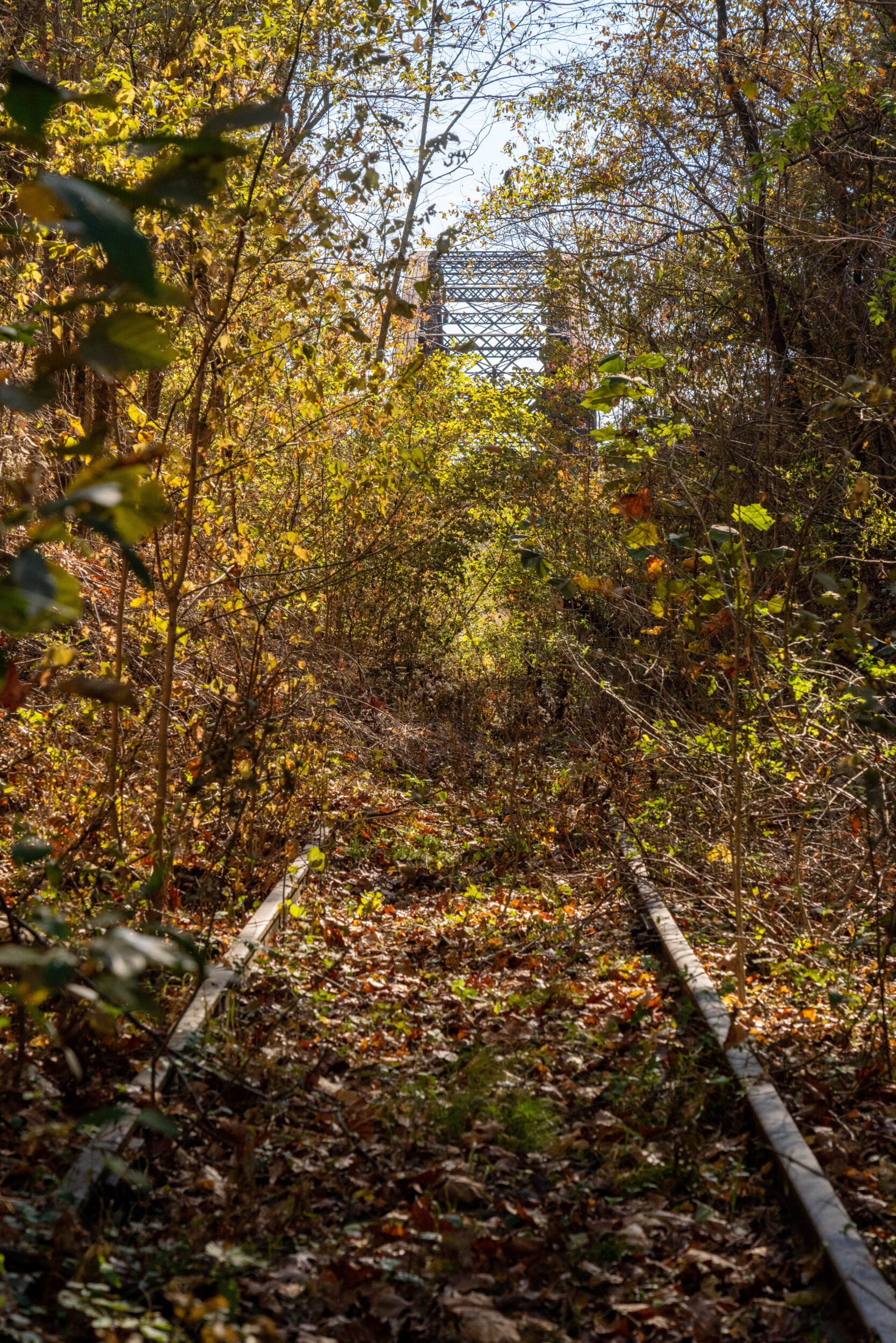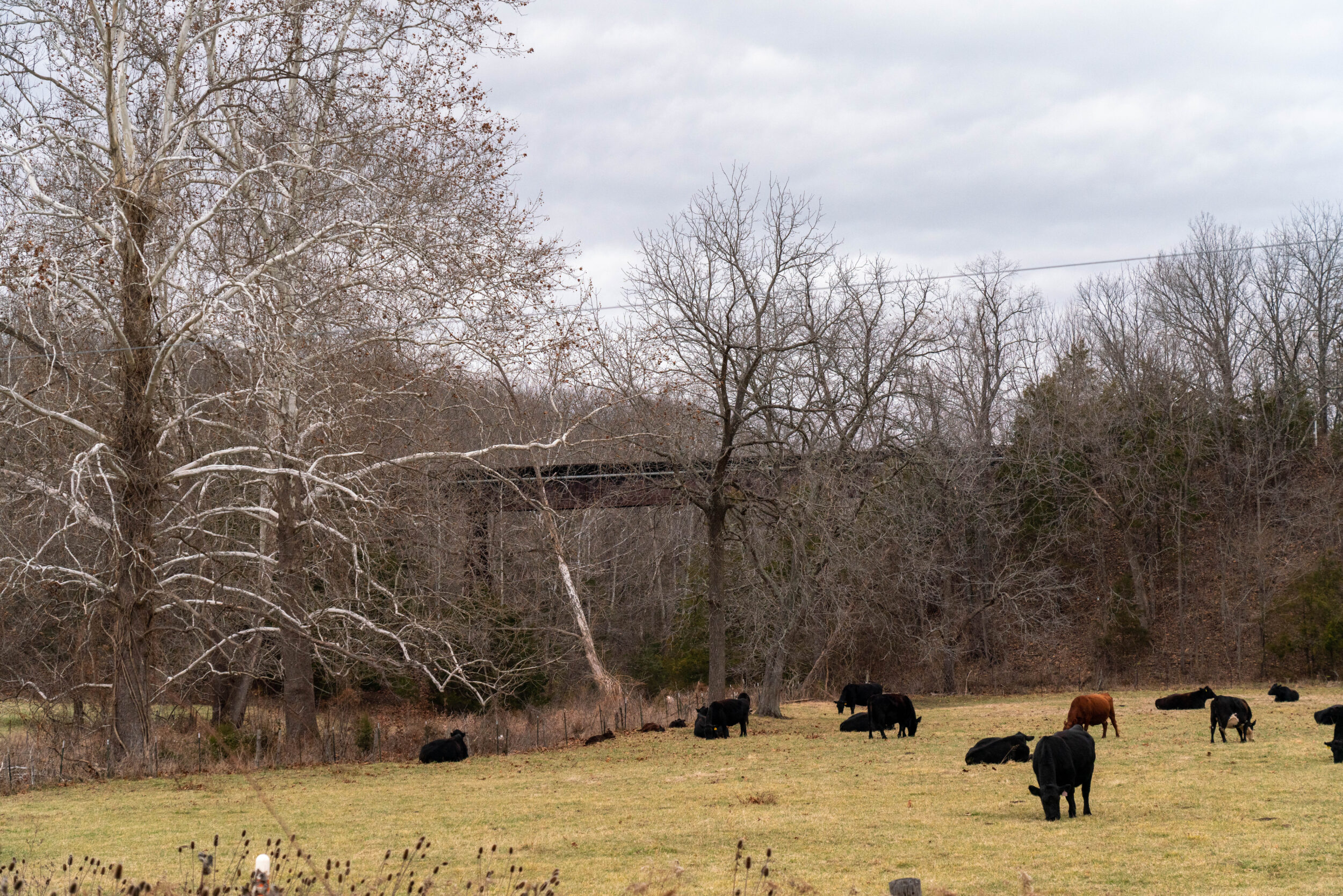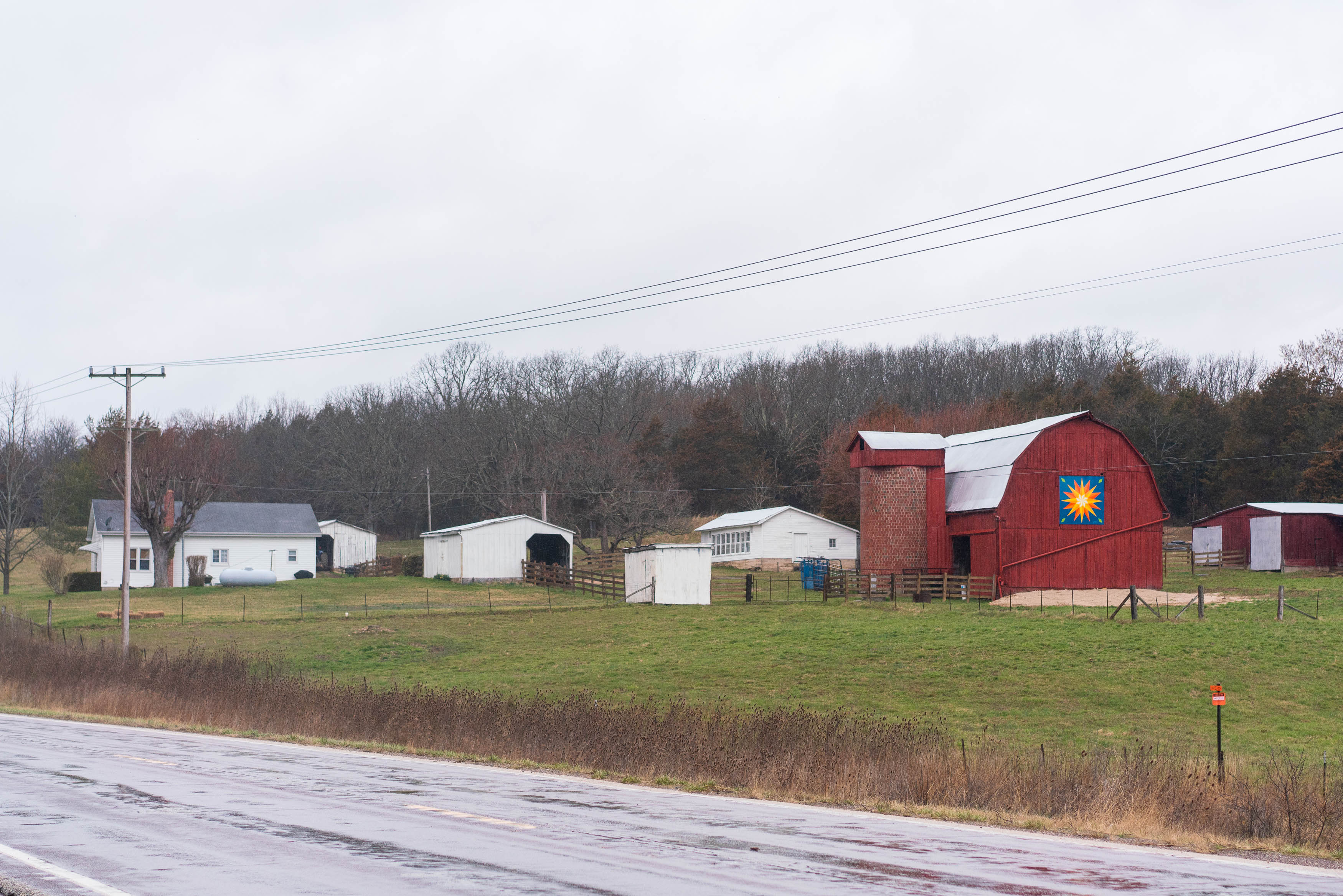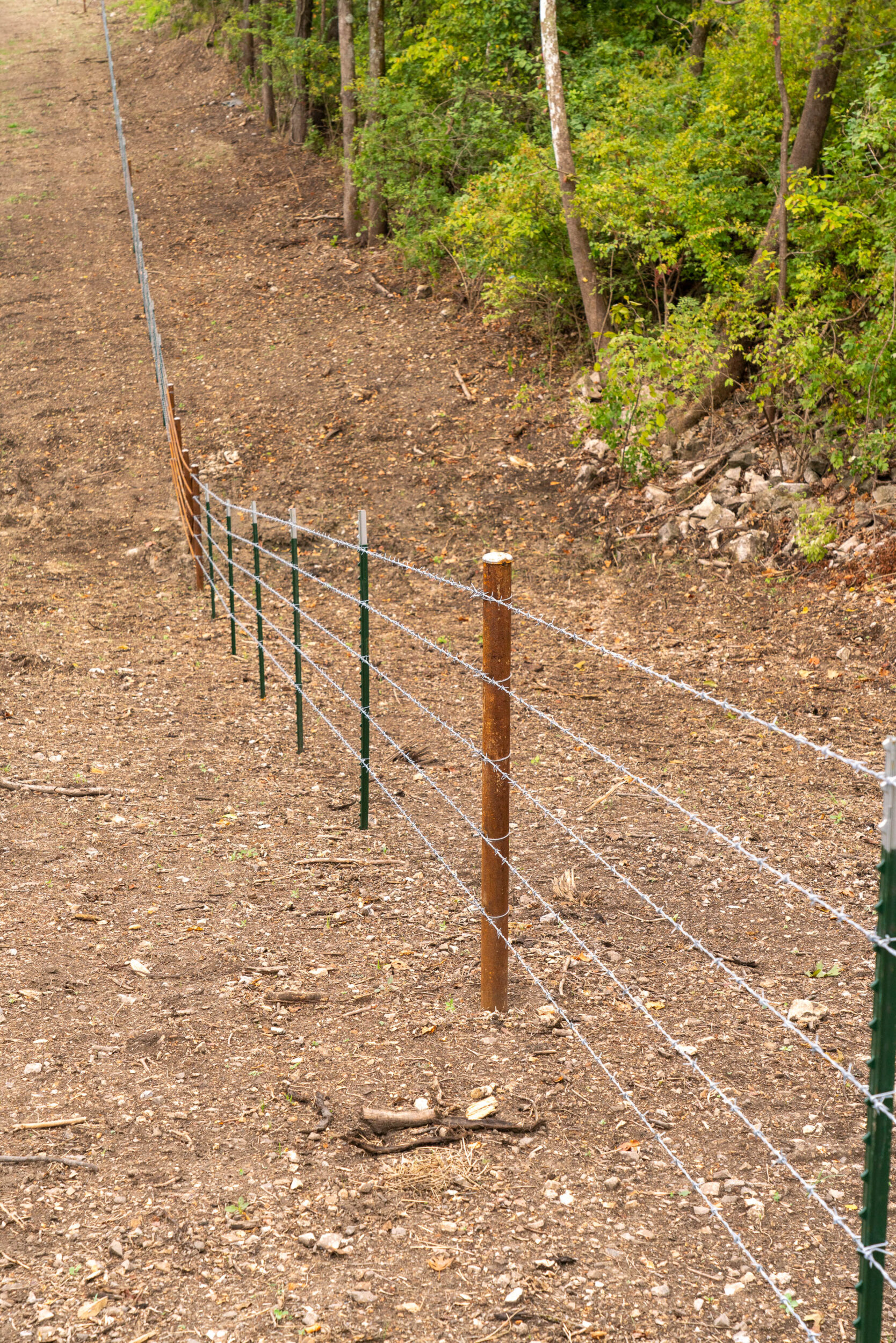Equestrians ride along a section of the Rock Island Trail that opened in 2016 and connects Windsor to Pleasant Hill.
MoDNR photo by Ben Nickelson
Published by
on
You can roam, ramble and ride at several Missouri state parks and historic sites, but when fully developed and open to the public, the new Rock Island Trail State Park will feature more than 200 miles of new, nonmotorized, accessible trail.

The park will link to the nationally recognized Katy Trail State Park, creating more than 440 miles of rail-trail network across the state, from Kansas City to St. Louis.
Spanning a section of the former Chicago, Rock Island and Pacific Railroad corridor, most of the park contains undeveloped trail not yet open for public use. However, it also encompasses the 47.5-mile section of the Rock Island Spur of Katy Trail State Park, which opened in December 2016. The finished section that is open to the public extends from Pleasant Hill to Windsor.
The Jackson County Rock Island Rail Corridor Authority has also completed 13.5 miles of trail. Several other communities along the corridor, such as Belle, Owensville, Eldon and Versailles have received private funding, as well as various alternative transportation and trail grants, for trail and trailhead construction. These communities are moving forward with development of their trail sections. In some areas these sections will also provide a safer route to school for students.
“After receiving the corridor from Ameren Missouri on Dec. 14, 2021, we began holding public meetings with landowners and other stakeholders, allowing for questions and answers, public input and assessment of the communities’ needs and goals,” said Ron Bentch, Rock Island Trail development coordinator. “Our first priority has been working with adjacent landowners to address fencing needs, liability and trespass issues.”
Fencing Forward
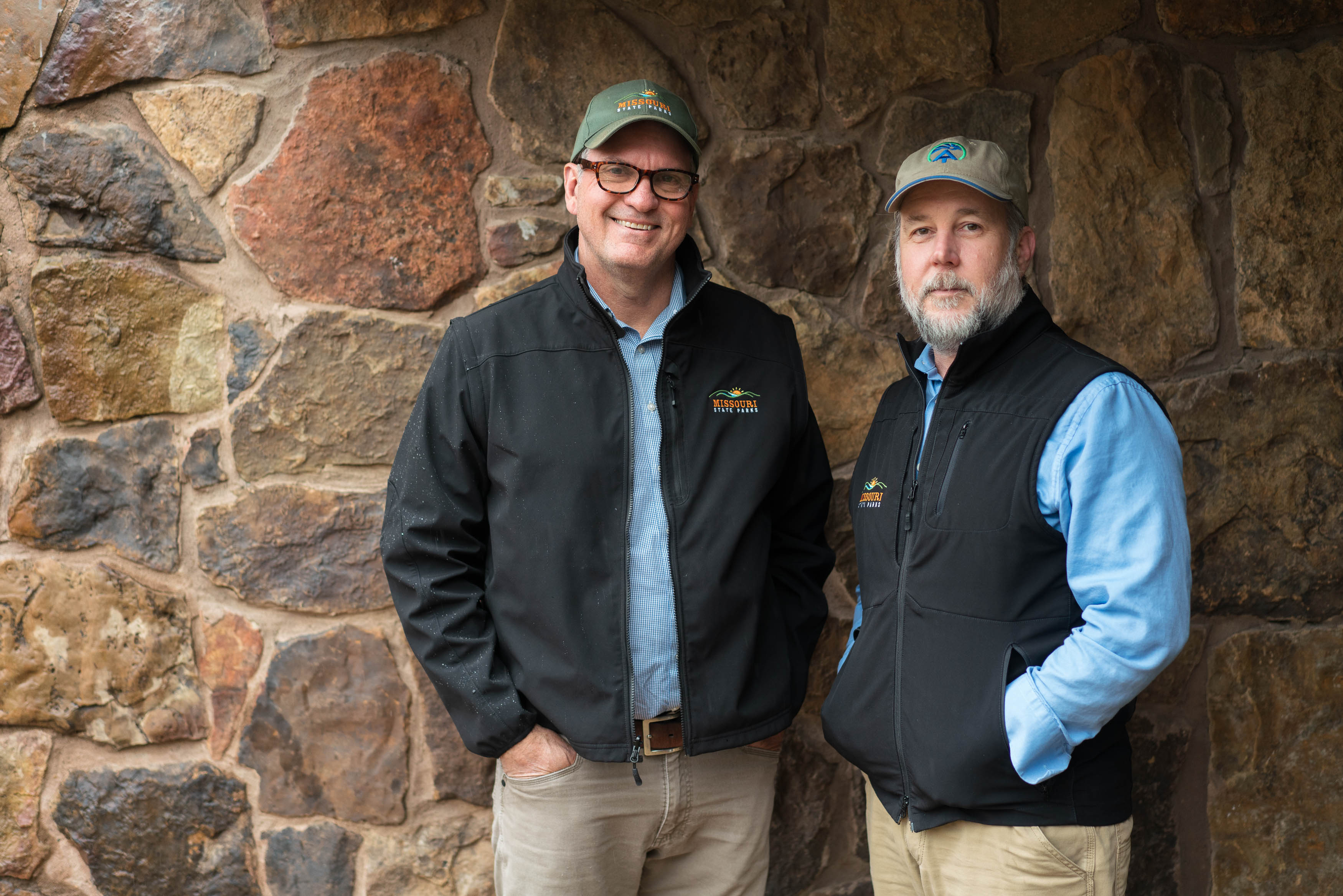
Missouri State Parks is working cooperatively with adjacent landowners along the corridor, just as it did on the Katy Trail. The park, which is not open yet, is marked with signs at regular intervals, warning trail users not to trespass. Some landowners have expressed interest in fencing the boundary between their property and the corridor right-of-way. Some of this work is already complete, with more to be finished as funding allows.
Bentch and Clint Barnett, the Missouri State Parks Rails-to-Trails project manager, have met with 38 landowners so far. In addition to discussing fencing needs, these meetings garnered some memories and interesting stories about the former railroad.
“These landowners will be our neighbors for generations to come,” Barnett said. “It has been great working with them and getting some fencing projects underway. We’ve really enjoyed meeting with different people and hearing their great stories. Many remember when the Rock Island Railroad was active in their community.”
The Rock Island in Rosebud
Bob Estes, 77, of Rosebud, grew up with tracks cutting through his family’s property and has fond memories of the Rock Island Rail Line. The house Estes grew up in, and where he still resides today, was built in the early 1900s.

“It was a way of life for us here. The trains would go through twice a day and blow their whistles. We just got used to it,” he said.
The trains stopped running around 1980, Estes recalled. But before that, the rail was used quite heavily. Until the mid-1940s, passenger trains used the tracks and during WWI and WWII, troop trains used them. He believes his grandmother took the train to St. Louis to visit the 1904 World’s Fair. The Rosebud Depot would handle shipping cases of their family’s chicken eggs and cream from their dairy cattle to St. Louis for bakeries to use. Later, trains hauled clay to a chemical plant in Owensville.
“The trains would go through, coasting and throwing sparks, setting the woods on fire. Of course, it would usually happen at night,” he said. Estes fought fires in his teens and remembers a preacher lived nearby, where the fire had spread. He said the preacher looked up and said, “Oh Lord, I wish it would rain.” They received a little sprinkle, but not enough to put out the fire, he said with a laugh.
As a young boy, Estes said migrant workers, or what they called hobos, hanging around his house were a common occurrence. His family never had any issues with crime or other problems, but his mother would give them food. They often offered to cut wood or do chores in exchange for her kindness.
Estes spent the majority of his life on the property, with stints working as a technical illustrator, packaging coordinator, toy designer, insurance adjuster and farmer. He appreciates the peace and solitude his property brings and hopes others can enjoy the area when the trail project is complete.
As the corridor is preserved through the Rock Island Trail State Park project, more and more of its history comes to light. You may have interesting, unique stories about the former Rock Island Rail Line that we’d like to hear about. If you do, please email them to tisha.holden@dnr.mo.gov.

